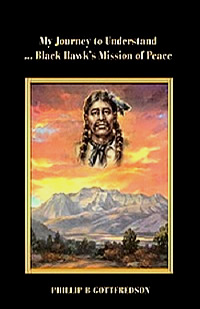404 OOPS!
We're sorry, the page you entered was not found
- Select from the above menu
- Check Your Spelling
- Use the search tool...
site search by freefind advanced ...Or, check this out; BLACK HAWK'S MISSION OF PEACE
Author Phillip B. Gottfredson fearlessly plunges into the heart of Utah's Black Hawk War, unraveling its hidden truths and resurrecting the silenced voices of the Timpanogos Nation in his extraordinary book, "My Journey to Understand Black Hawk's Mission of Peace."
*For more information click HERE.
